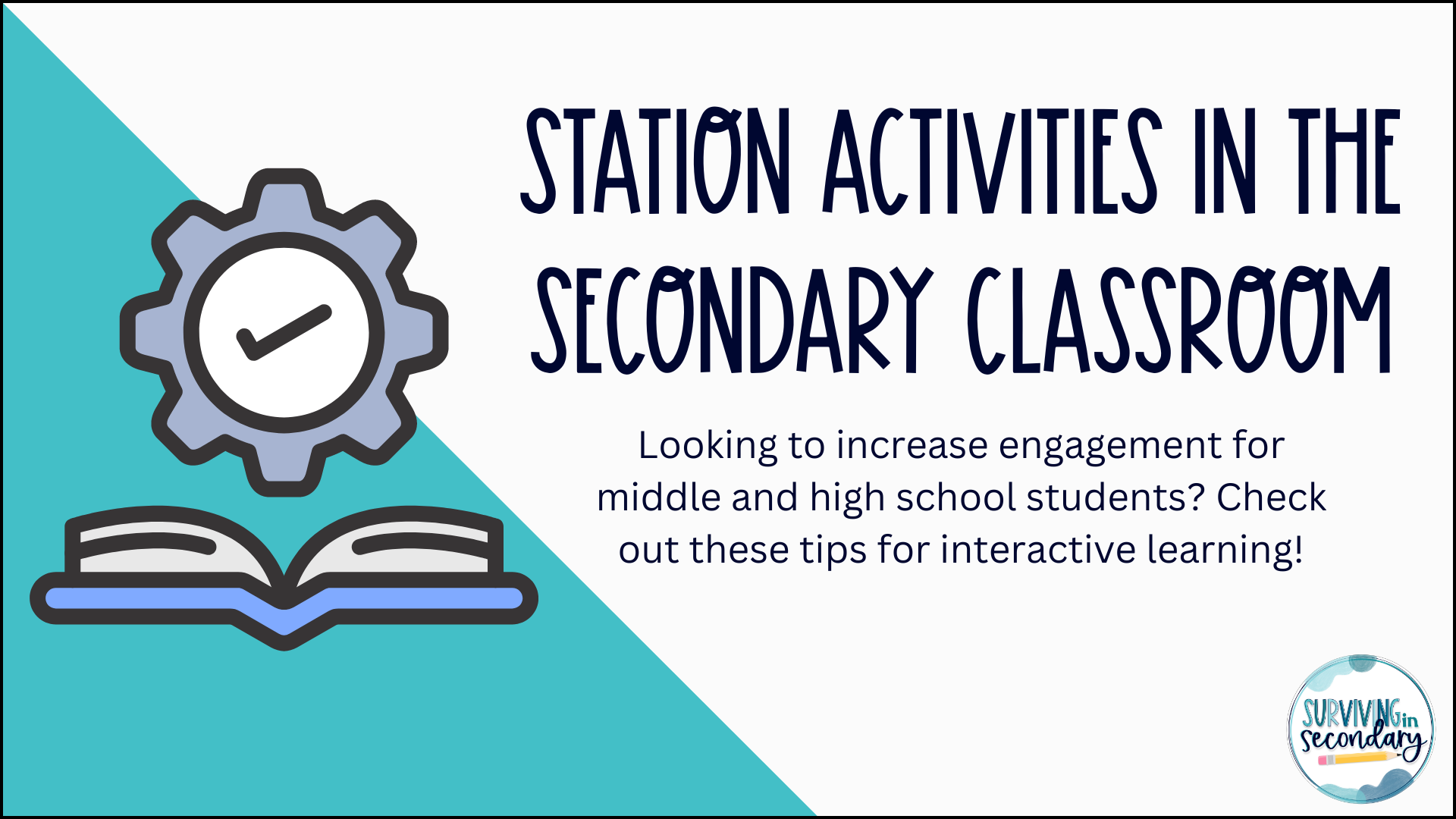How Can Station Activities Boost Engagement and Learning in the Secondary Classroom?

By Kasi @ Surviving in Secondary
Let’s talk classroom engagement! Once you’ve established the rapport, how do you keep it going? How do you create a classroom that is safe, engaging, and challenging all at once? What strategies can you use within your curriculum or activities that bring joy to learning? One powerful strategy that secondary teachers can use to boost student participation and foster active learning is station activities. These structured, yet flexible, learning experiences allow students to rotate through different tasks or activities, ensuring that they engage with the material in a variety of ways. This approach not only breaks up the monotony of traditional lectures but also caters to diverse learning styles and needs — a vital approach in today’s educational landscape!
What are station activities?
Station activities, sometimes referred to as learning stations or centers, involve setting up multiple activity spots around the classroom, each with a different focus or task for students to complete. Students rotate through these stations in small groups, spending a set amount of time at each before moving on to the next. This method allows students to explore a concept from multiple angles and promotes collaboration and active learning.
How do station activities benefit secondary students?
Although station activities are more widely associated with the elementary school classroom, they can be just as impactful in the middle and high school levels. It’s the power of their versatility. By rotating through different stations, students can delve into new concepts through interactive activities and discussions, reinforce their understanding with independent work and differentiated materials, and be challenged with extension activities designed to deepen their learning.
This approach seamlessly combines teamwork with personalized learning. Station activities promote positive social connections as students share ideas, discuss concepts, and problem-solve together. The variety of tasks caters to different strengths and interests, allowing more students to contribute meaningfully to group work. Meanwhile, teachers can focus on small groups or individual students at specific stations, providing real-time, tailored support and feedback. These collaborative interactions foster a supportive learning environment where students feel connected and valued.
So… how do you set one up?
Setting up a station activity in the high school classroom requires a little bit of prep work to ensure that each station offers meaningful and engaging tasks aligned with the lesson objectives. Begin by identifying the key concepts or skills you want students to focus on, then design a variety of activities that cater to different learning styles—such as gamified review, hands-on experiments, reading and analysis, collaborative problem-solving, and creative tasks. Arrange the classroom to allow easy movement between stations, and provide clear instructions and materials at each station so students can work independently or in small groups. As the teacher, you can identify a specific station to support or float around and support different groups or students as needed.
That seems like a lot of work…
Don’t worry! Here at Surviving in Secondary, we have seen the benefits of station activities and love to use them for test prep and review days so we can target multiple skills in one class period! Each station activity has 4 to 5 gamified learning opportunities, station cards, and instructions. Check out our print-and-go stations/centers activities here! Be on the lookout for digital station activities in the future!
Let's keep in touch! Fill out the form below to join our email list for updates, exclusive freebies, giveaways, and more!
Thanks for joining us!
Check your email :)
